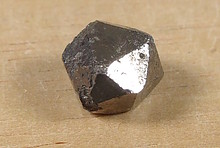Home PageAbout MindatThe Mindat ManualHistory of MindatCopyright StatusWho We AreContact UsAdvertise on Mindat
Donate to MindatCorporate SponsorshipSponsor a PageSponsored PagesMindat AdvertisersAdvertise on Mindat
Learning CenterWhat is a mineral?The most common minerals on earthInformation for EducatorsMindat ArticlesThe ElementsThe Rock H. Currier Digital LibraryGeologic Time
Minerals by PropertiesMinerals by ChemistryAdvanced Locality SearchRandom MineralRandom LocalitySearch by minIDLocalities Near MeSearch ArticlesSearch GlossaryMore Search Options
The Mindat ManualAdd a New PhotoRate PhotosLocality Edit ReportCoordinate Completion ReportAdd Glossary Item
Mining CompaniesStatisticsUsersMineral MuseumsClubs & OrganizationsMineral Shows & EventsThe Mindat DirectoryDevice SettingsThe Mineral Quiz
Photo SearchPhoto GalleriesSearch by ColorNew Photos TodayNew Photos YesterdayMembers' Photo GalleriesPast Photo of the Day GalleryPhotography
╳Discussions
💬 Home🔎 Search📅 LatestGroups
EducationOpen discussion area.Fakes & FraudsOpen discussion area.Field CollectingOpen discussion area.FossilsOpen discussion area.Gems and GemologyOpen discussion area.GeneralOpen discussion area.How to ContributeOpen discussion area.Identity HelpOpen discussion area.Improving Mindat.orgOpen discussion area.LocalitiesOpen discussion area.Lost and Stolen SpecimensOpen discussion area.MarketplaceOpen discussion area.MeteoritesOpen discussion area.Mindat ProductsOpen discussion area.Mineral ExchangesOpen discussion area.Mineral PhotographyOpen discussion area.Mineral ShowsOpen discussion area.Mineralogical ClassificationOpen discussion area.Mineralogy CourseOpen discussion area.MineralsOpen discussion area.Minerals and MuseumsOpen discussion area.PhotosOpen discussion area.Techniques for CollectorsOpen discussion area.The Rock H. Currier Digital LibraryOpen discussion area.UV MineralsOpen discussion area.Recent Images in Discussions
Mineralogical ClassificationIMA 2015-100 = kannanite
11th Dec 2018 01:51 UTCMarco E. Ciriotti Manager
▪ Nishio-Hamane, D., , M., Ogawa, N., Minakawa, T. (2018): Kannanite, a new mineral from Kannan Mountain, Japan. Journal of Mineralogical and Petrological Sciences, 113, 245-250.
Abstract:
Kannanite, a new Ca–dominant member of the ardennite series, was obtained from Kannan Mountain, Ozu, Ehime Prefecture, Japan. Kannanite occurs in fine quartz veins crossing the hematite–rich regions of an iron–manganese ore included in the metachert. These veins are pale orange in color, while the kannanite itself is brownish–orange to orange, with a thin section exhibiting weak pleochroism. The mineral was found in grain sizes ranging from several to 15 µm and has a Mohs hardness of 6 and a calculated density of 3.43 g cm−3. The mean refractive index obtained from the Gladstone–Dale relationship for this mineral is 1.788. The empirical formula for kannanite is
(Ca3.60Mn2+0.40)Σ4(Al3.00Mn3+1.31Fe3+0.69Mg0.71Mn2+0.19Ni0.06Cu0.05)Σ6[(V5+0.70Si0.16As0.14)Σ1O3.84(OH)0.16](SiO4)2(Si3O10)(OH)6,
while the simplified formula is Ca4[(Al,Mn3+,Fe3+)5Mg] (VO4)(SiO4)2(Si3O10)(OH)6. Kannanite has an orthorhombic structure with a space group Pnmm and unit cell parameters a = 8.8802(14) Å, b = 5.9919(13) Å, c = 18.882(3) Å and V = 1004.7(3) Å3. Kannanite is considered to be formed by the activities of metamorphic fluid accompanied with the Sanbagawa metamorphism.
26th Jan 2019 14:33 UTCRonnie Van Dommelen 🌟 Manager




Mindat.org is an outreach project of the Hudson Institute of Mineralogy, a 501(c)(3) not-for-profit organization.
Copyright © mindat.org and the Hudson Institute of Mineralogy 1993-2024, except where stated. Most political location boundaries are © OpenStreetMap contributors. Mindat.org relies on the contributions of thousands of members and supporters. Founded in 2000 by Jolyon Ralph.
Privacy Policy - Terms & Conditions - Contact Us / DMCA issues - Report a bug/vulnerability Current server date and time: April 27, 2024 02:51:11
Copyright © mindat.org and the Hudson Institute of Mineralogy 1993-2024, except where stated. Most political location boundaries are © OpenStreetMap contributors. Mindat.org relies on the contributions of thousands of members and supporters. Founded in 2000 by Jolyon Ralph.
Privacy Policy - Terms & Conditions - Contact Us / DMCA issues - Report a bug/vulnerability Current server date and time: April 27, 2024 02:51:11











